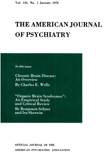Racial intolerance in a correctional institution: an ecological view
Abstract
To determine the significance of social factors in racial intolerance, the authors studied the relationship between relational behavior and ethnicity, group status and role, peer acceptance, and group cohesion in an adolescent correctional institution. Results portray three distinct patterns of adaptation. Hispanics (Chicanos) formed a highly cohesive group that required considerable conformity to group norms; policy was implemented by a leadership capable of relating well to all ethnic groups. Whites formed a disorganized and fragmented group, led by individuals who engaged in racially antagonistic behavior. The highly cohesive black group and their leadership were simultaneously in the forefront of both racial cooperation and racial conflict.
Access content
To read the fulltext, please use one of the options below to sign in or purchase access.- Personal login
- Institutional Login
- Sign in via OpenAthens
- Register for access
-
Please login/register if you wish to pair your device and check access availability.
Not a subscriber?
PsychiatryOnline subscription options offer access to the DSM-5 library, books, journals, CME, and patient resources. This all-in-one virtual library provides psychiatrists and mental health professionals with key resources for diagnosis, treatment, research, and professional development.
Need more help? PsychiatryOnline Customer Service may be reached by emailing [email protected] or by calling 800-368-5777 (in the U.S.) or 703-907-7322 (outside the U.S.).



